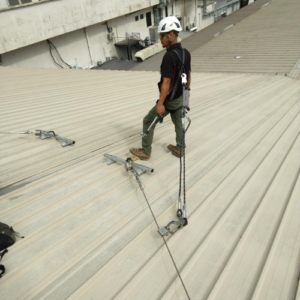The Growing Importance of Web Design in Singapore’s Digital Economy
Singapore has established itself as a global hub for innovation, business, and technology, making digital presence more critical than ever. A strong website is often the first interaction customers have with a business, shaping their perception and influencing whether they stay or leave. In a country where over 90% of the population is connected to the internet, having a professional online platform is not just optional—it’s essential for brand credibility. Consumers in Singapore are highly tech-savvy and expect seamless online experiences, from fast-loading pages to mobile-friendly layouts. A poorly designed website can immediately damage trust and push potential clients toward competitors. On the other hand, an attractive, functional, and responsive site creates confidence and drives conversions. This is why Singapore web design plays such a significant role in supporting both established companies and growing startups looking to compete in a digital-first marketplace.
Key Elements That Define Effective Singapore Web Design
A well-crafted website balances aesthetics and functionality to meet the expectations of Singapore’s demanding online audience. Navigation must be intuitive so visitors can find information quickly without unnecessary clicks or confusion. Mobile responsiveness is another non-negotiable factor, as a large majority of users in Singapore access websites through smartphones. Beyond design, page speed is a major factor—slow-loading websites risk high bounce rates in a fast-paced market. The right visual hierarchy also guides users naturally toward calls-to-action, whether it’s filling out a form, purchasing a product, or scheduling an appointment. Security features like SSL certificates are equally important for building trust, especially in sectors like finance, education, and healthcare. Ultimately, effective Singapore web design must provide an immersive yet efficient user experience that reflects the sophistication of the country’s digital ecosystem.
Essential elements include:
- User-friendly navigation and clear site structure
- Mobile responsiveness and cross-device compatibility
- Fast-loading pages with optimized images and scripts
- Strong visual branding aligned with the company’s identity
- Secure, SSL-enabled platforms that reassure users
The Role of Cultural and Market Influences in Website Design
Designing for a Singaporean audience requires more than technical expertise; it demands cultural sensitivity and market awareness. Singapore’s diverse demographic—comprising Chinese, Malay, Indian, and expatriate communities—means that web design often incorporates multilingual features. Many businesses opt for bilingual or trilingual sites to cater to English, Mandarin, or Malay speakers, depending on the industry. Visual elements, color choices, and design styles also reflect cultural nuances that resonate with local users. For instance, minimalism is highly appreciated, but incorporating localized visuals or symbols can create a stronger emotional connection. Singaporeans also value efficiency, so websites that provide clear pathways to information tend to perform better. Understanding the unique blend of global and local culture allows web designers to craft digital experiences that truly connect with audiences. By integrating market knowledge with design strategies, businesses can ensure their websites appeal to a wide range of users within the Singaporean landscape.
SEO Integration in Singapore Web Design
A beautifully designed website serves little purpose if it cannot be found online. In Singapore, competition across industries is intense, making search engine optimization (SEO) a core part of web design strategy. The most successful websites integrate SEO practices during the development phase rather than as an afterthought. This includes clean coding structures, keyword-optimized content, meta tags, and schema markup. Local SEO is especially powerful in Singapore, where users often search for services and products near their location. A website designed with SEO in mind can rank higher in search results, leading to greater visibility and organic traffic. Technical factors such as mobile optimization, fast loading speeds, and secure HTTPS connections also directly influence rankings. The integration of SEO within Singapore web design not only improves discoverability but also enhances user experience, ensuring that visitors remain engaged once they land on a site.
Common Mistakes to Avoid in Singapore Web Design
Despite the wealth of tools and agencies available, many businesses fall into common pitfalls when building or updating their websites. Overcomplicating layouts with too many graphics or interactive features can overwhelm users instead of guiding them. Ignoring mobile optimization is another major issue, particularly in a market where mobile traffic often exceeds desktop use. Accessibility is often overlooked, leaving individuals with disabilities unable to properly navigate sites. Relying on outdated templates or designs can also give the impression that a business is stagnant or not forward-thinking. Websites without proper security measures risk losing user trust and facing penalties from search engines. Neglecting clear calls-to-action often results in lost conversion opportunities. By avoiding these mistakes, businesses can create digital platforms that not only look professional but also deliver measurable results.
Mistakes to watch out for:
- Excessive clutter or overwhelming graphics
- Poor mobile responsiveness
- Ignoring accessibility and inclusivity
- Outdated visuals that don’t reflect current trends
- Lack of clear conversion paths
The Future of Web Design in Singapore
As Singapore continues its journey toward becoming a Smart Nation, web design is evolving alongside technological advancements. Minimalist, functional, and mobile-first designs are gaining traction, focusing on clean layouts and optimized user experiences. Artificial intelligence and chatbots are becoming integral parts of websites, offering personalized recommendations and customer support. With e-commerce booming, web design is adapting to include seamless payment gateways, localized delivery integrations, and user-friendly product catalogs. Immersive experiences such as augmented reality (AR) and virtual reality (VR) are also making their way into sectors like retail and real estate. Cybersecurity will remain a top priority, with advanced encryption and data protection features shaping the design process. Singapore web design is not just about aesthetics—it is about staying ahead of consumer expectations and future-proofing businesses in a competitive global market.
Choosing the Right Web Design Partner in Singapore
Finding the right design partner is a critical step for businesses aiming to strengthen their digital presence. A professional Singapore web design agency offers local market expertise, industry-specific insights, and an understanding of cultural nuances. Business owners should look for qualities such as proven portfolios, technical capabilities, and strong communication. Agencies that offer end-to-end solutions, from design to development and SEO, provide added value for long-term growth. Cost is also an important consideration, but the focus should be on return on investment rather than choosing the cheapest option. Another factor is scalability—ensuring the design can grow with the business’s future needs. Partnering with the right agency ensures ongoing support, updates, and security, which are crucial in a fast-changing digital environment. By making an informed decision, businesses can secure a competitive advantage in Singapore’s digital-first economy.
Frequently Asked Questions (FAQ)
How much does web design cost in Singapore?
Costs vary depending on complexity, features, and agency expertise, ranging from affordable basic packages to premium custom designs.
How long does it take to build a professional website in Singapore?
Timelines depend on the scope, but most business websites take anywhere from four to twelve weeks to complete.
What industries benefit most from customized web design?
E-commerce, finance, healthcare, education, and hospitality see the greatest returns from tailored design solutions.
Why choose a Singapore-based web designer over a freelancer abroad?
Local designers understand the cultural context, business environment, and consumer expectations better, ensuring stronger relevance.
How often should a website be redesigned?
Most businesses update or redesign their websites every three to five years to stay aligned with technology and design trends.
Takeaway
Singapore web design has become a vital component of business growth in one of the world’s most digitally advanced markets. From building trust through user-friendly layouts to integrating SEO for higher visibility, the right design decisions can significantly influence a company’s success. Cultural nuances, mobile-first strategies, and future technologies like AI and AR are shaping the way websites are built for Singapore’s diverse audience. Avoiding common mistakes and choosing the right design partner ensures that businesses can create impactful online experiences. As Singapore moves further into its Smart Nation vision, companies that invest in high-quality web design will stay competitive, relevant, and connected to their audiences.







